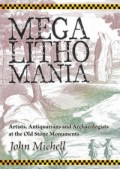Sick Rams Used as Ancient Bioweapons
Submitted by coldrum on Saturday, 16 February 2008 Page Views: 1060
DiscoveriesInfected rams and donkeys were the earliest bioweapons, according to a new study which dates the use of biological warfare back more than 3,300 years. According to a review published in the Journal of Medical Hypotheses, two ancient populations, the Arzawans and the Hittites, engaged "in mutual use of contaminated animals" during the 1320-1318 B.C. Anatolian war."The animals were carriers of Francisella tularensis, the causative agent of tularemia," author Siro Trevisanato, a molecular biologist based in Oakville, Ontario, Canada told Discovery News.
Also known as "rabbit fever," tularemia is a devastating disease which even today can be fatal, if not treated with antibiotics. Its symptoms range from skin ulcers, swollen and painful lymph glands to pneumonia, fever, chills, progressive weakness and respiratory failure.
The disease affects animals such as rabbits, sheep and donkeys and it is passed on to humans through various routes, most commonly through the bite of infected ticks and deerflies.
First isolated in 1911, Francisella tularensis is highly infectious and is now considered one of the pathogens most likely to be used in bioterrorism attacks.
According to Trevisanato, the bacterium flourished in the Eastern Mediterranean toward the end of the 14th century B.C., when a long-lasting, deadly epidemic plagued most of the Middle East.
Known as the Hittite plague, the epidemic is clearly described in letters to the Egyptian king Akhenaten. A letter, dating around 1335 B.C., reports a pestilence in Simyra, a city near today’s border between Lebanon and Syria.
Despite efforts to contain the epidemic -- donkeys were banned from being used in caravans -- the disease contaminated an area stretching from Cyprus to Iraq and from Israel to Syria. Subsequently, wars spread the epidemic to central and Western Anatolia. Finally, Aegean soldiers fighting in western Anatolia returned home to their islands, further spreading the epidemic.
"A disease lasting 35-40 years, infecting humans and animals, causing fever, disabilities, and death, spreading via rodents aboard ships as well as donkeys, points to Francisella tularensis. Moreover, there is evidence that tularemia can be traced as far back as 2500 B.C. in the same area, implying that the region was endemic for the bacterium," Trevisanato said.
According to the researcher, the Hittites, whose empire stretched from modern-day Turkey to northern Syria, were severely hit by the disease after they attacked a weakened area around Simyra.
The weakened Hittite empire attracted the Arzawans from Western Anatolia and a new war, which lasted between 1320 and 1318 B.C., began.
It was at this point that the Hittites used disease-ridden rams and donkeys with the purpose of infecting the enemy.
Records indicate that rams mysteriously began populating the roads in Arzawa. According to Trevisanato, they were sent off by the Hittites, who realized that the animals were involved with spreading the disease.
"The Hittites were weak when the Arzawans attacked them, yet they smashed the enemy within two years. Which kind of secret weapon did they know of to do this Bronze Age blitzkrieg, given their weakened troops and political mess?" posed Trevisanato.
To support the bioweapon theory, tablets dating to the 14-13th century B.C., describe how a ram and a woman attending the animal were sent on the road, spreading the disease along the way.
"The country that finds them shall take over this evil pestilence," the tablet said.
For more, see Dsicovery.com.
Note: Bronze Age tablets tell of deadly (but erratic) bio-weapon.






 We would like to know more about this location. Please feel free to add a brief description and any relevant information in your own language.
We would like to know more about this location. Please feel free to add a brief description and any relevant information in your own language. Wir möchten mehr über diese Stätte erfahren. Bitte zögern Sie nicht, eine kurze Beschreibung und relevante Informationen in Deutsch hinzuzufügen.
Wir möchten mehr über diese Stätte erfahren. Bitte zögern Sie nicht, eine kurze Beschreibung und relevante Informationen in Deutsch hinzuzufügen. Nous aimerions en savoir encore un peu sur les lieux. S'il vous plaît n'hesitez pas à ajouter une courte description et tous les renseignements pertinents dans votre propre langue.
Nous aimerions en savoir encore un peu sur les lieux. S'il vous plaît n'hesitez pas à ajouter une courte description et tous les renseignements pertinents dans votre propre langue. Quisieramos informarnos un poco más de las lugares. No dude en añadir una breve descripción y otros datos relevantes en su propio idioma.
Quisieramos informarnos un poco más de las lugares. No dude en añadir una breve descripción y otros datos relevantes en su propio idioma.